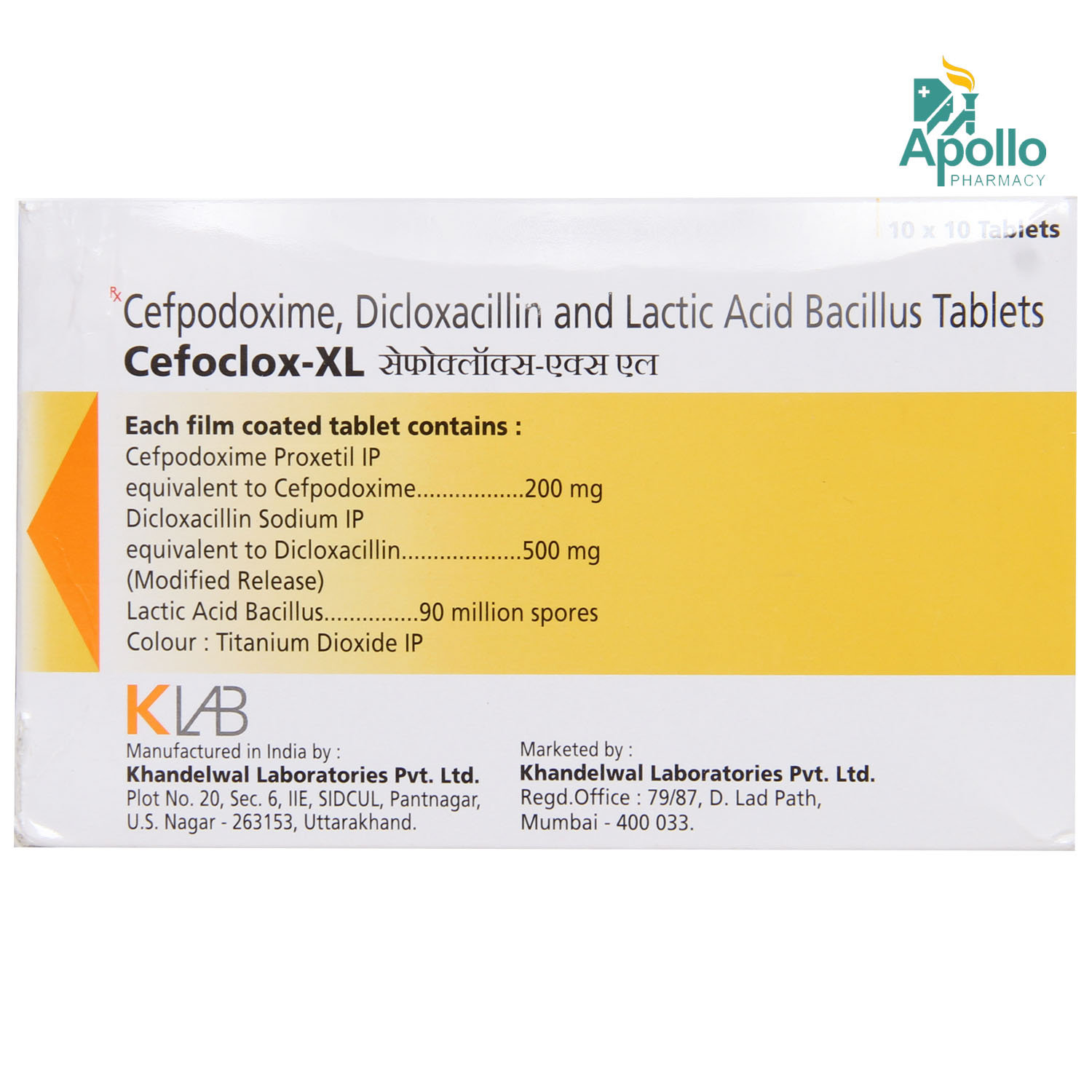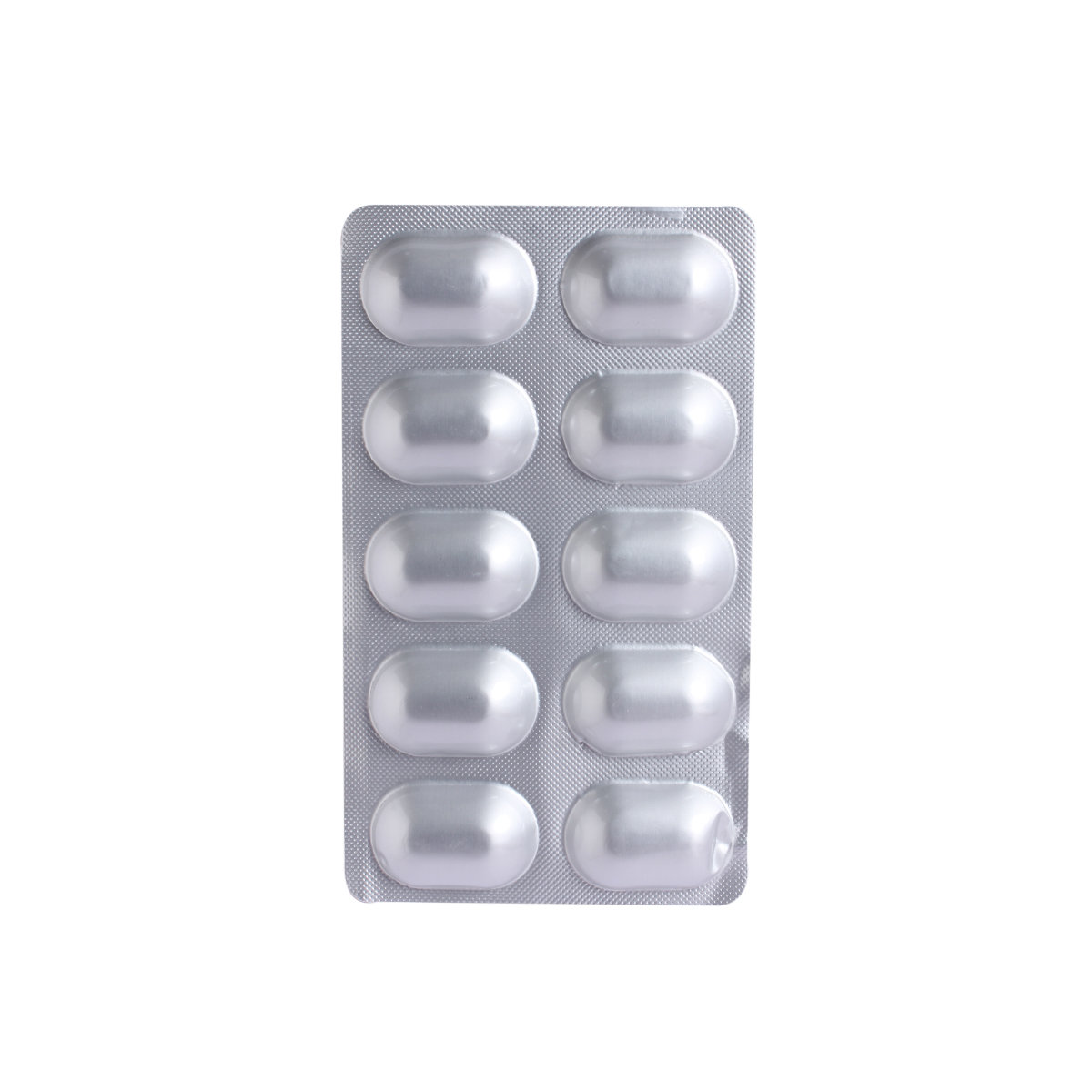Cefpodoxime+dicloxacillin
About Cefpodoxime+dicloxacillin
Cefpodoxime+dicloxacillin belongs to a class of drugs called antibiotics used to treat bacterial infections of the urinary tract, ears, nose, throat, chest, and lungs. Bacterial infection is a condition in which harmful bacteria grow in the body and cause infection. It can infect any part of the body and multiply very quickly. Cefpodoxime+dicloxacillin does not work against infections caused by the virus.
Cefpodoxime+dicloxacillin is a combination of two antibiotics: Cefpodoxime and Dicloxacillin. Both of them work by interfering with the formation of the bacterial cell wall (a protective covering) necessary for their survival. Thereby damaging the bacterial cell wall and killing bacteria.
Take Cefpodoxime+dicloxacillin as prescribed by your doctor. You are advised to take Cefpodoxime+dicloxacillin for as long as your doctor has prescribed it based on your medical condition. Sometimes, you may experience vomiting, nausea, diarrhoea, stomach pain, indigestion, or vaginal itching. Most of these side effects of Cefpodoxime+dicloxacillin do not require medical attention and gradually resolve over time. However, if the side effects persist or worsen, please consult your doctor.
Inform your doctor if you are allergic to Cefpodoxime+dicloxacillin, penicillin, or other medicines. If pregnant or breastfeeding, please inform your doctor before taking Cefpodoxime+dicloxacillin. Dicloxacillin may reduce the effectiveness of birth control pills. Therefore, discuss with your doctor about other contraceptive methods, such as using non-hormonal birth control measures such as condoms, spermicide, or diaphragm, to avoid pregnancy while taking Cefpodoxime+dicloxacillin. Drive only if you are alert, as Cefpodoxime+dicloxacillin may reduce alertness or cause confusion. You must complete the full course of Cefpodoxime+dicloxacillin as your doctor prescribes for effective results.
Uses of Cefpodoxime+dicloxacillin
Medicinal Benefits
Cefpodoxime+dicloxacillin is a combination of two broad-spectrum antibiotics: Cefpodoxime and Dicloxacillin, that act against both aerobic (grow in the presence of oxygen) and anaerobic (grow in the absence of oxygen) gram-negative and gram-positive bacteria. Cefpodoxime+dicloxacillin is used in the treatment of several bacterial infections. Cefpodoxime+dicloxacillin interferes with the formation of the bacterial cell wall (a protective covering) necessary for their survival. Thereby damaging the bacterial cell wall and killing bacteria.
Directions for Use
Storage
Side Effects of Cefpodoxime+dicloxacillin
- Vomiting
- Nausea
- Diarrhea
- Stomach pain
- Indigestion
- Vaginal itching
- Abdominal Pain
- Confusion
- Epigastric Pain
- Urticaria
- Seizures (uncontrollable jerking of limbs)
Drug Warnings
Do not take Cefpodoxime+dicloxacillin if you are allergic to any components present in it. If you have kidney or liver problems, asthma, bleeding or blood clotting disorder, or stomach or intestinal disorder such as inflammation of the large intestine, inform your doctor before taking Cefpodoxime+dicloxacillin. If pregnant or breastfeeding, please inform your doctor before taking the Cefpodoxime+dicloxacillin. Dicloxacillin may reduce the effectiveness of birth control pills. Therefore, discuss with your doctor about other contraceptive methods, such as using non-hormonal birth control measures such as condoms, spermicide, or diaphragm, to avoid pregnancy while taking Cefpodoxime+dicloxacillin. Drive only if you are alert, as Cefpodoxime+dicloxacillin may reduce alertness or cause confusion. You must complete the full course of Cefpodoxime+dicloxacillin as your doctor prescribes for effective results. Cefpodoxime+dicloxacillin may interact with certain tests, such as glucose (sugar) in urine and give unusual results. Therefore, inform the doctor that you are using Cefpodoxime+dicloxacillin before undergoing any tests.
Drug Interactions
Drug-Drug Interactions: Cefpodoxime+dicloxacillin may interact with a blood thinner (warfarin), diuretics (furosemide) and antibiotic (azithromycin).
Drug-Food Interactions: No interactions found.
Drug-Disease Interactions: If you have kidney or liver problems, asthma, bleeding or blood clotting disorder, or stomach or intestinal disorder such as inflammation of the large intestine, inform your doctor before taking the Cefpodoxime+dicloxacillin.
Drug-Drug Interactions Checker List:
Safety Advice

Alcohol
cautionThe interaction of Cefpodoxime+dicloxacillin with alcohol is unknown. Please consult a doctor before consuming alcohol while using Cefpodoxime+dicloxacillin.

Pregnancy
cautionPlease consult a doctor if you are pregnant or planning for pregnancy. Cefpodoxime+dicloxacillin is given to pregnant women only if the doctor thinks benefits outweigh risks.

Breast Feeding
cautionIt is unknown whether Cefpodoxime+dicloxacillin is excreted in human milk. Cefpodoxime+dicloxacillin is given to breastfeeding mothers if the doctor thinks benefits are more significant than risks. Please consult a doctor if you are breastfeeding.

Driving
cautionCefpodoxime+dicloxacillin may decrease alertness or cause dizziness. Therefore, drive only if you are alert after taking Cefpodoxime+dicloxacillin.

Liver
cautionDose adjustment may be needed. Please consult your doctor if you have any concerns regarding this or liver impairment/liver disease before taking Cefpodoxime+dicloxacillin.

Kidney
cautionDose adjustment may be needed. Please consult your doctor if you have any concerns regarding this or kidney impairment/kidney disease before taking Cefpodoxime+dicloxacillin.

Children
cautionCefpodoxime+dicloxacillin is given to children only if prescribed by a doctor.
Habit Forming
Diet & Lifestyle Advise
- It would be best to take probiotics after taking the full course of Cefpodoxime+dicloxacillin to restore some healthy bacteria in the intestine that may have been killed. Taking probiotics after antibiotic treatment can reduce the risk of antibiotic-associated diarrhoea. Certain fermented foods like yoghurt, cheese, sauerkraut and kimchi can help restore the intestine's good bacteria.
- Include more fibre-enriched food in your diet, as it can be easily digested by gut bacteria which helps stimulate their growth. Thus fibre foods may help restore healthy gut bacteria after taking a course of antibiotics. Whole grains, like whole-grain bread, and brown rice, should be included in your diet.
- Avoid taking too much calcium-enriched foods and drinks as it might affect the working of Cefpodoxime+dicloxacillin.
- Avoid intake of alcoholic beverages with Cefpodoxime+dicloxacillin as it can make you dehydrated and affect your sleep. This can make it harder for your body to aid the Cefpodoxime+dicloxacillin in fighting off infections.
Special Advise
- If you are about to undergo any blood or urine tests, inform your doctor that you are taking Cefpodoxime+dicloxacillin as it may interfere with these tests.
- Inform your doctor if you are allergic to penicillin.
- Cefpodoxime+dicloxacillin may affect coagulation test or prothrombin time (time is taken for blood clotting), liver function tests, and serum tests. Inform the person doing the tests that you are taking Cefpodoxime+dicloxacillin.
- Diabetes patients who take blood tests should inform your doctor about your use of Cefpodoxime+dicloxacillin.
- May cause live bacterial vaccines (such as typhoid vaccine) to not work as well. Do not have any immunizations/vaccinations while using this medication unless your doctor tells you to.
Patients Concern
Disease/Condition Glossary
Bacterial infection: Bacterial infection is a condition in which harmful bacteria grow in the body and cause infection. It can target any part of the body and multiply very quickly. Bacteria come in three basic shapes: spherical, rod, or spiral-shaped. Bacteria may be gram-positive (have thick cell walls) or gram-negative (do not have cell walls). Appropriate tests are done to identify bacterial strains, and based on the results, proper medication is prescribed. Some common symptoms of bacterial infection include cough, fever, and tiredness.
FAQs
The Cefpodoxime+dicloxacillin contains Cefpodoxime and Dicloxacillin, which work by interfering with the formation of the bacterial cell wall (a protective covering) necessary for survival. Thereby damaging the bacterial cell wall and killing bacteria.
You are not recommended to take Cefpodoxime+dicloxacillin with warfarin as co-administration of these two medicines may increase bleeding risk. However, please consult your doctor before taking Cefpodoxime+dicloxacillin with other medicines.
Cefpodoxime+dicloxacillin is not used to treat viral infections. Cefpodoxime+dicloxacillin is an antibiotic that is used to treat only bacterial infections.
Dicloxacillin may reduce the effectiveness of birth control pills. Therefore, discuss with your doctor about other contraceptive methods, such as using non-hormonal birth control measures such as condoms, spermicide, or diaphragm, to avoid pregnancy while taking Cefpodoxime+dicloxacillin.
Cefpodoxime+dicloxacillin may be used to treat lung infections caused by bacteria. Cefpodoxime+dicloxacillin is an antibiotic that kills bacteria and prevents the spread of infection. But should be used only when prescribed by a doctor.
Cefpodoxime+dicloxacillin may cause diarrhoea as a common side effect. However, if the condition persists, worsens, or you notice blood or mucus in your stools, avoid taking Cefpodoxime+dicloxacillin and consult a doctor immediately.
You are not recommended to stop taking Cefpodoxime+dicloxacillin without consulting your doctor to worsen the infection or cause recurring symptoms. Therefore, take Cefpodoxime+dicloxacillin for as long as your doctor has prescribed it, and if you experience any difficulty while taking Cefpodoxime+dicloxacillin, please consult your doctor.





